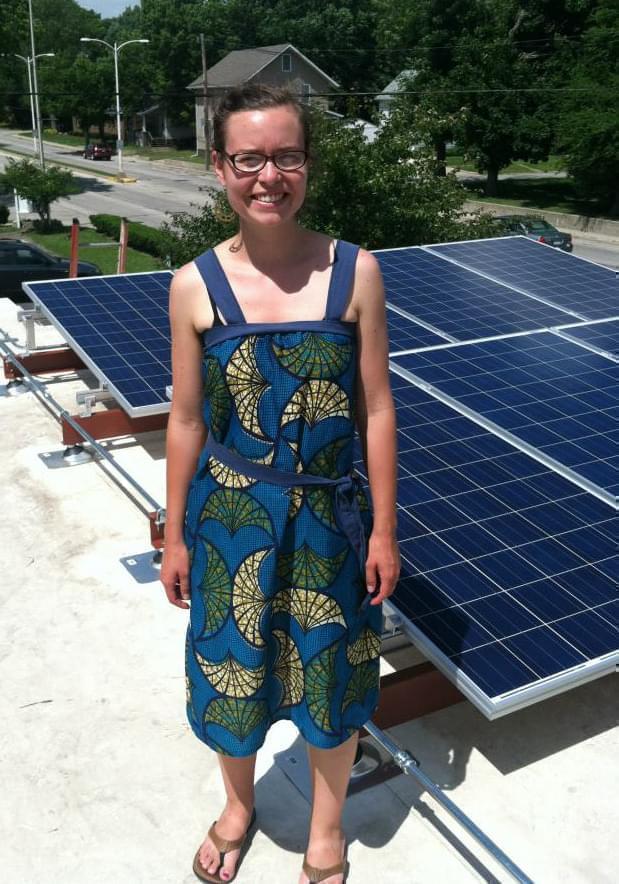Local action on global warming
This summer, the Champaign-Urbana Mass Transit District maintenance facility got something really cool to go on top of its roof—a big photovoltaic system, more than 1200 panels.
According to Jane Sullivan, whose title at MTD is Grant Manager and Sustainability Planner (and who is a 2012 graduate of the UI School of Earth, Society, and Environment, where I teach), it’s the biggest solar array currently operating in central Illinois.
It will generate 350,000-kilowatt hours of electricity over the course of a year, which translates to about one quarter of the electricity used there. (The maintenance facility is a busy place, operating 24/7 when the U of I is in session and providing full service maintenance for the District’s fleet of 102 buses.) Sullivan said the investment in solar is in keeping with the broader environmental mission of the District. “We’re interested in finding as many ways as we can to reduce our environmental impact, and reducing greenhouse gas emissions is an important part of that.”
The motivation for a solar array that went online at the First Mennonite Church of Champaign-Urbana this summer was similar.

Holly Nelson on the roof with solar panels at First Mennonite Church of Champaign-Urbana
Holly Nelson, a member of the congregation’s “Green Team” who helped to instigate the project and see it through, characterized it this way: “We had taken smaller steps toward being more sustainable and caring for creation, including reusable dishes and a community garden. This was something bigger for us.”
The 32-panel array at the church is of a different scale than the one at MTD, but so is the need it serves. It generates the equivalent of roughly two-thirds of the electricity used to run the facility over the course of a year.
About forty percent of the money invested in the First Mennonite project was covered by a rebate from the Illinois Department of Commerce and Economic Opportunity. (If you’re wondering about solar for yourself, your business, or a nonprofit, you can look into this incentive here.) But the majority of the funding came from donations by the congregation dedicated specifically to the project. To Nelson, the congregation’s enthusiasm for the project was evident in how quickly that money came in. “It’s the biggest investment our church has ever made,” she said, “and we raised all of it in a month.”
You may remember from a commentary last year that Champaign resident and U of I physics professor Scott Willenbrock had installed solar panels on his family’s home in a quest to achieve “net-zero” energy use; that is, to generate as much electricity as the family used at home.
That’s an ambitious goal for a house built in 1929. But when we spoke recently, Willenbrock reported that in the first six-month period for which he had data (January 1 to July 1 of this year) they had achieved it. On top of that, they did so even with the demand for electricity added by an all-electric car they bought in April.
You can learn more about Willenbrock’s project, which has applications for anyone interested in conserving or generating energy at home at http://physics.illinois.edu/outreach/zero-net-energy-house/.
In terms of conserving and generating energy, no building in town—or in all of the U. S. for that matter—is more ambitious than the new home of Electrical and Computer Engineering at the U of I. You can visit there and learn more about it at a public dedication ceremony tomorrow afternoon. The building is located at 306 North Wright St. and the ceremony begins at 1:00 p.m.
Details at http://buildingcampaign.ece.illinois.edu/opening-celebration/.
